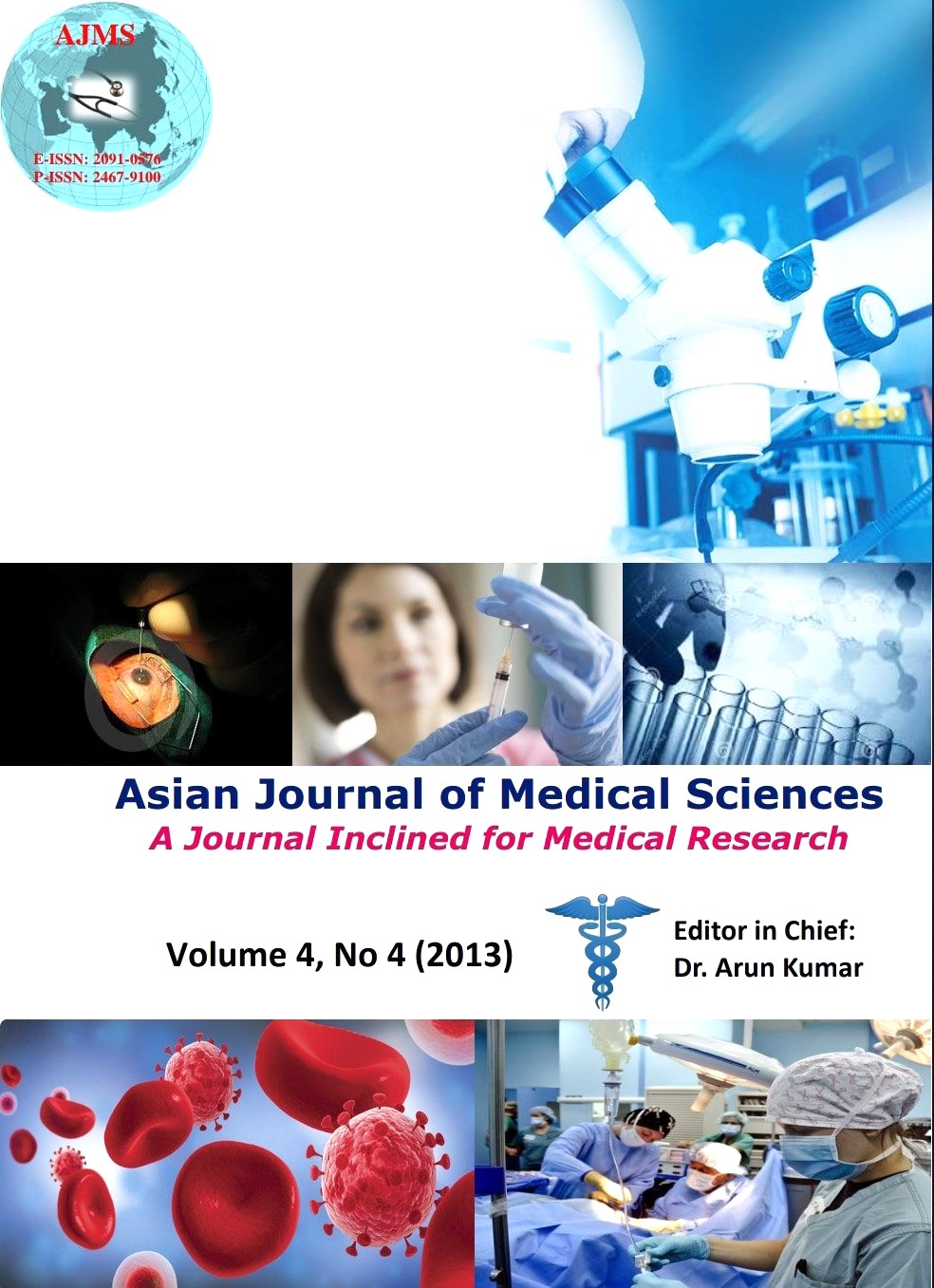Spectrum of Leprosy Patients with Clinico-Histopathological Correlation: A Hospital Based Study
Keywords:
Leprosy, Ridley-Jopling, HistopathologyAbstract
Introduction: Leprosy is a chronic granulomatous, infectious disease involving skin and peripheral nerves. It is present in various clinicopathological forms depending upon immune status of the patients. Histopathological examination of skin provides confirmatory diagnosis in suspected cases and gives indication of progression and regression of disease under treatment. Ridley and Jopling classification is used to classify leprosy. The objective of study was to identify the clinical pattern of leprosy and performed detail clinico- histopathological correlation in our institute.
Method: The study was carried out on the skin biopsies received in between 2007-2010. Biopsies were fixed in 10% formalin, processed and stained with Hematoxylin and Eosin, modified Fite Ferraco and Ziehl-Neelsen stains. The predesigned Performa was used to record observation. The clinical diagnosis were correlated with histopathology in all 120 cases.
Result: The age of the patients was ranged from 8 to 79 years with mean age of 36.38 years. The male to female ratio of patients was 1.5 to 1. The majority of cases 79 (65.8%) were in the age group of 21-50 years. Highest parity was observed in stable polar group TT 100%. Clinco-histopathological agreement was seen in 98 (81.67%) cases, 14 (11.67%) cases shows minor disagreement and 8 (6%) cases major disagreement.
Conclusion: The clinical and histopathological features along with bacteriological index are useful than any single parameter in arriving definitive diagnosis and classification of the leprosy.
Asian Journal of Medical Science, Volume-4 (2013), Pages 11-16
DOI: http://dx.doi.org/10.3126/ajms.v4i4.7997
Downloads
Downloads
Additional Files
Published
How to Cite
Issue
Section
License
Authors who publish with this journal agree to the following terms:
- The journal holds copyright and publishes the work under a Creative Commons CC-BY-NC license that permits use, distribution and reprduction in any medium, provided the original work is properly cited and is not used for commercial purposes. The journal should be recognised as the original publisher of this work.
- Authors are able to enter into separate, additional contractual arrangements for the non-exclusive distribution of the journal's published version of the work (e.g., post it to an institutional repository or publish it in a book), with an acknowledgement of its initial publication in this journal.
- Authors are permitted and encouraged to post their work online (e.g., in institutional repositories or on their website) prior to and during the submission process, as it can lead to productive exchanges, as well as earlier and greater citation of published work (See The Effect of Open Access).




